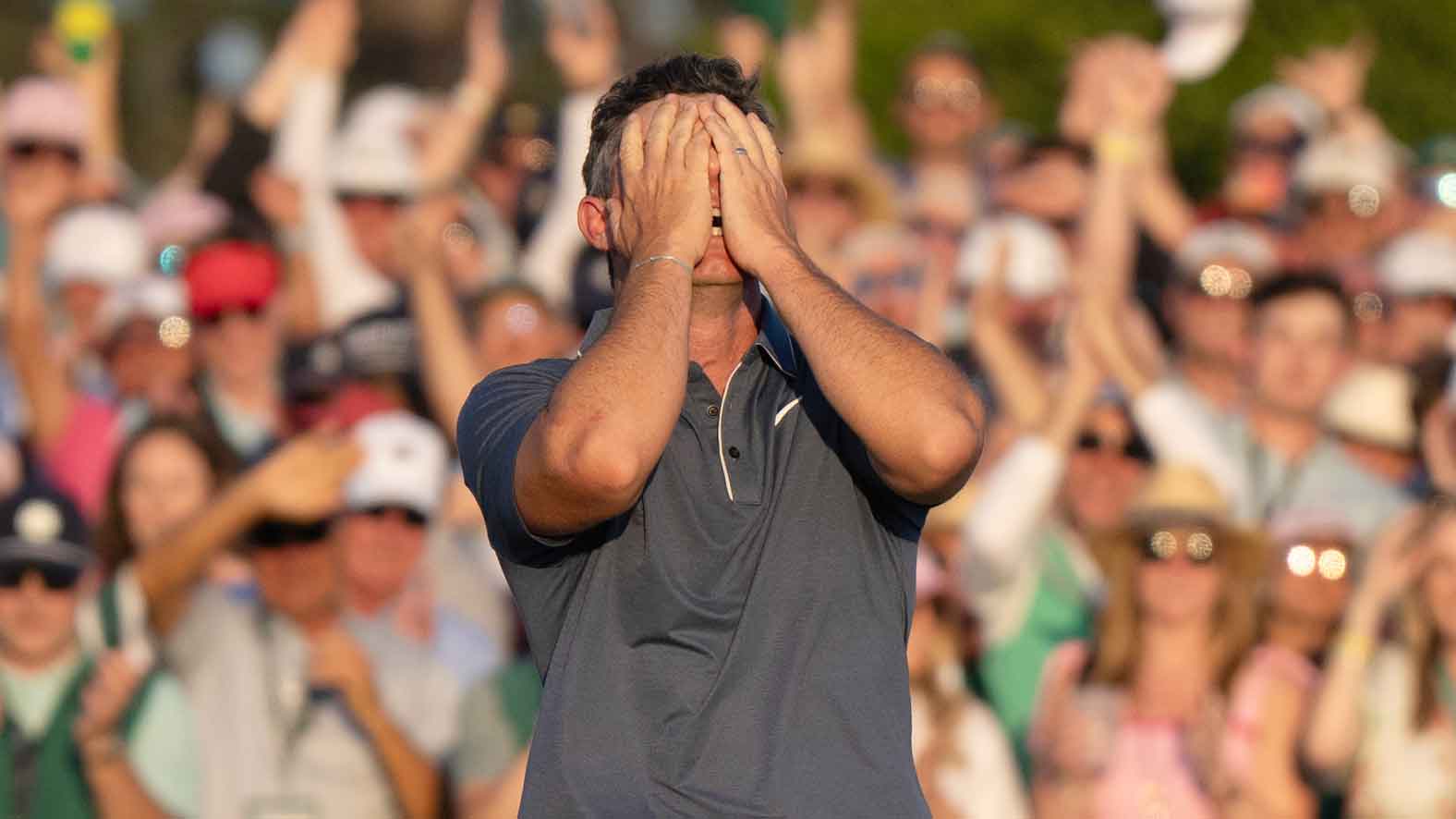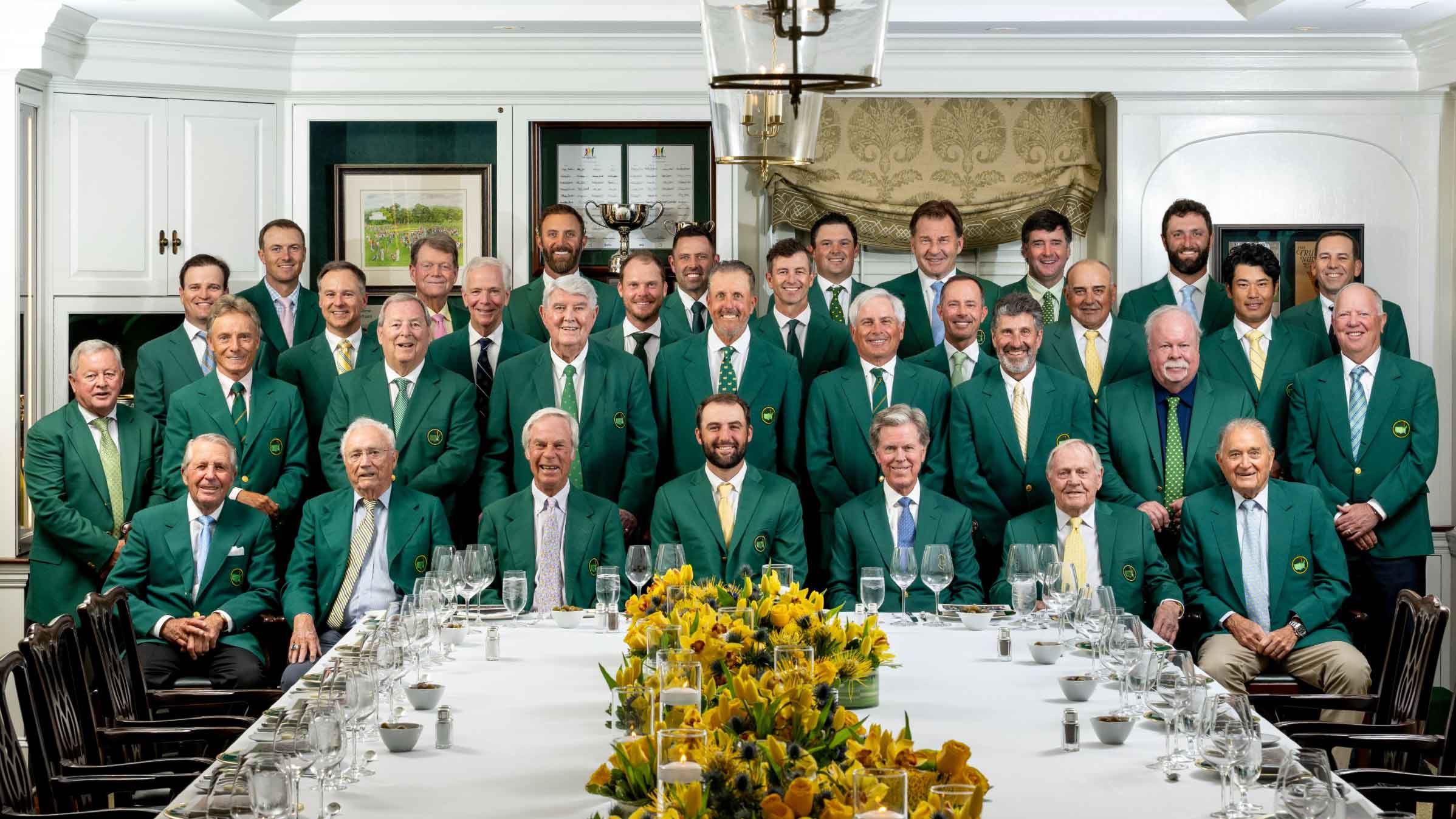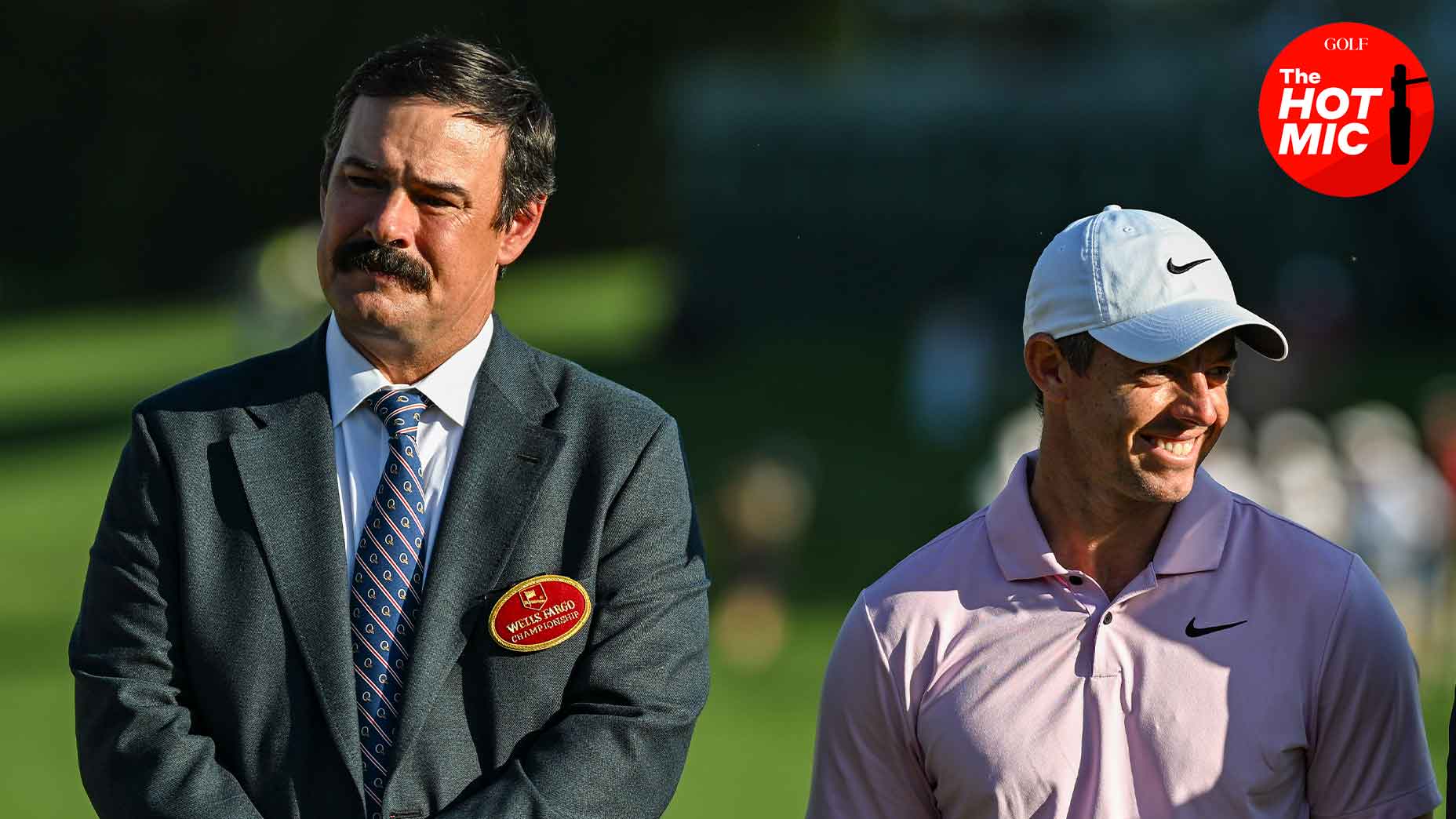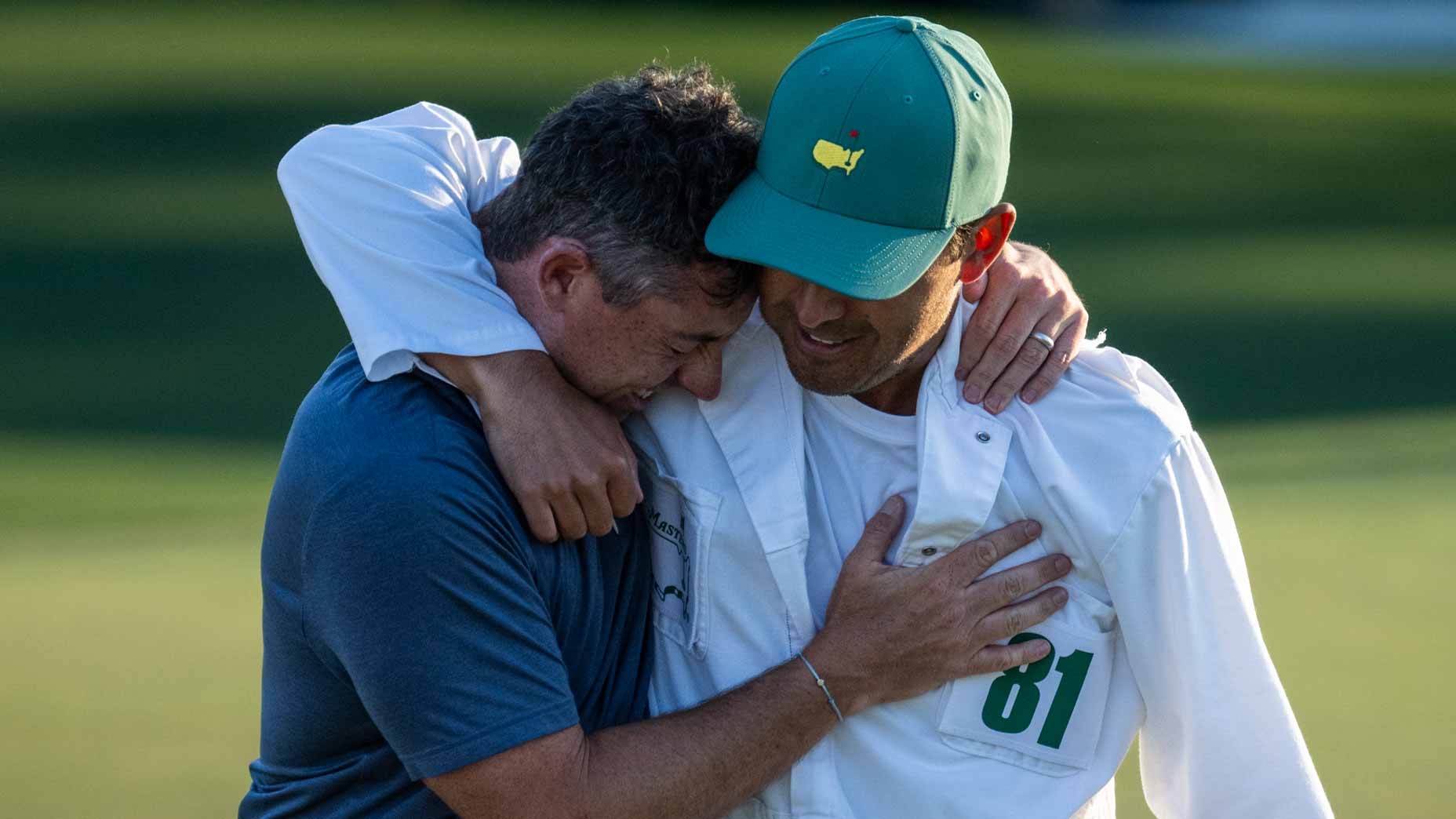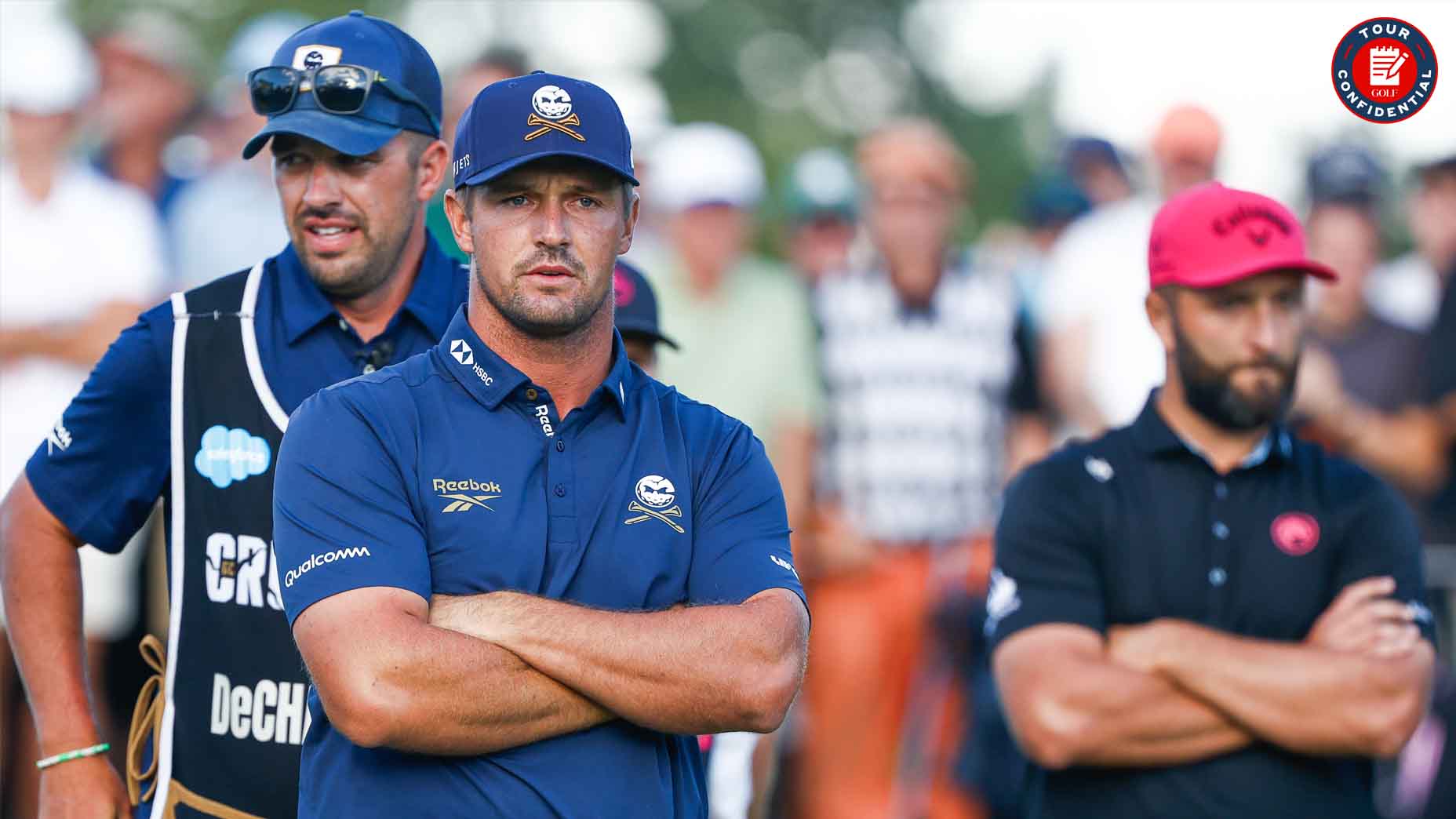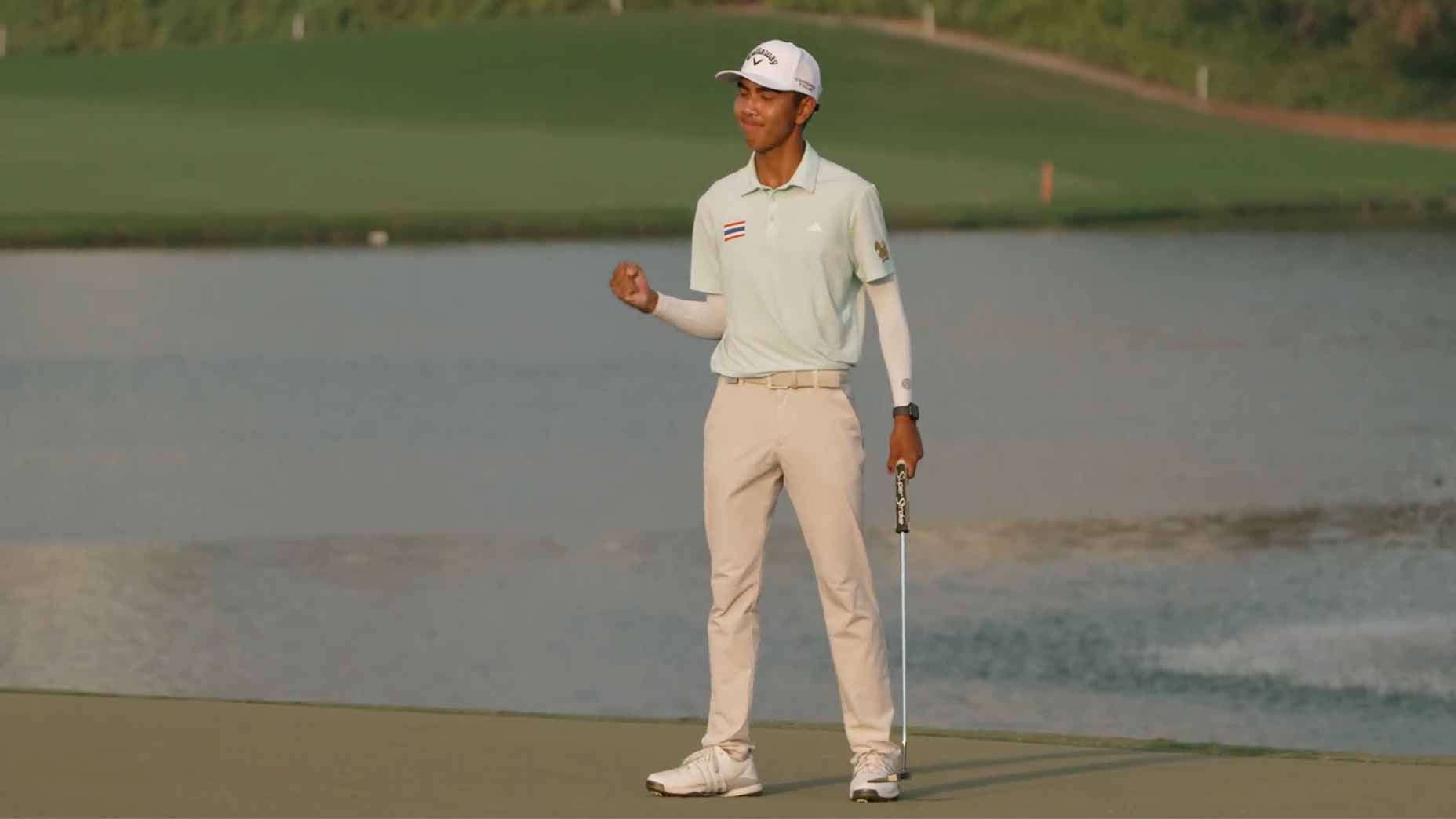Talk about getting lucky: The only job I’ve ever had in my adult life is working for CBS Sports. My job has taken me to hundreds of professional golf events. Some Champions tour events, some LPGA events, and hundreds and hundreds of PGA Tour events. Many PGA Championships. And many Masters Tournaments.
When people hear that last part, they ask some interesting questions. For instance: “Do you get to drive down Magnolia Lane?” When we’re there for the tournament, we don’t drive down Magnolia Lane. There’s a small army of us; we have our own entrance to the CBS Sports compound.
If all goes well, you’ll never see it on TV, because it’s way off course. Our job is to focus on the course, the golfers and the tournament. We’re there to serve the viewer. And when we’re done at Augusta, we travel to Hilton Head. We’ve been going to Sea Pines forever. It seems like yesterday that Bernhard Langer won at Augusta and then at Hilton Head in back-to-back weeks. That was 35 years ago, in 1985. In TV, the pace is fast and the years get compressed. I know Davis Love has won five times at Hilton Head, and we’ve had more fun dinners there than I could possibly remember. We have restaurants in every town and city we go to.
Some of the places the golf team at CBS Sports visits on an annual basis are like second homes for us: New Orleans, Columbus, Greensboro, Hartford, San Diego and many others.
I have made 50 or more trips to Pebble Beach, to scout locations or to work the tournament. In my early years there, it was still the “Crosby,” for Bing Crosby, who started the event. Golf has been lucky to have so many big personalities shape the game. I have been lucky to know so many of them. The Crosby Clambake turned into the AT&T National Pro-Am. It’s not an easy week, with golf being played on three different courses. I caught the Jack Lemmon years, the Kevin Costner years, the Bill Murray years and the Clint Eastwood decades. The winners at Pebble tell you all you need to know about that tournament and its standing among the game’s great players: Tom Watson, early in his career; Johnny Miller, at the end of his; Tiger Woods and Phil Mickelson and Davis Love.
We’ve been fortunate to cover the PGA Championship every year since 1991, when John Daly won. That championship has brought as much drama to viewers as any. Tiger’s win over Bob May in a playoff. Y.E. Yang beating Tiger on a Sunday. Rory McIlroy winning with the sun setting. And this year, what Collin Morikawa did at Harding Park in August, when golf played its first major since the pandemic began, was absolutely incredible, with much of it broadcast in prime time. Golf on TV loves the West Coast.
Our annual trip to Augusta, of course, is one of the main fixtures on our schedule. For years now, Jim Nantz has worked the NCAA men’s basketball championship on the first Monday night in April and been in Augusta the next day. Not this year, but most years.
The Masters has been shown on CBS every April since 1956. This one will be different. A Masters in November, with Tiger Woods as the defending champion, without patrons, during a pandemic. But you could also say that every Masters is one of a kind. There’s always a great story to tell. That’s our job, to tell the story of the Masters.
I came up at CBS Sports under a legend, Frank Chirkinian. When you talk about some of the game’s big personalities, Frank has to be on the list. He’s in the World Golf Hall of Fame, as he should be. Frank’s first tournament for CBS was the PGA Championship in 1958. His first Masters was in 1959, when Arnold Palmer was the defending champion for the first time. His last year was 1996, when Nick Faldo and Greg Norman played together on that memorable Sunday and Nick won his third green jacket. My first year as the coordinating producer was in 1997, when Tiger won by 12 at age 21. This year will be my last in that role. I’m 65.
Sellers Shy will take over my job, bringing golf to you via CBS cameras and announcers at 20 or so tournaments each year. Sellers is like a kid brother to me. He’s been with CBS his whole career, too. TV requires a long apprenticeship and a lot of on-the-job training. No one can teach you how long to leave the camera tight on the golfer’s face before going to the ball in flight and then seeing it trickle into a pond. You learn, first by seeing others do it and then doing it yourself. I hope to be coming back in future years to help the team however I can.
That, by the way, is my advice to people who want to work in this business. Just say yes. Lance Barrow
We really are a team, and I see my job as being the quarterback. If everybody runs their patterns, the show comes together. Frank was more like a dictator. People called him the Ayatollah — a name he loved. After one of my early shows, he said to me, “How come you didn’t yell at anybody?”
“Because everybody was doing their job,” I said. Yelling is not my style.
“Always yell at somebody,” Frank said, “so everybody knows you’re the boss.”
To Frank, golf tournaments were like movies or theater. He was close to Greg Norman, in part because the Shark was larger than life, like a Hollywood star. I remember on the Sunday morning of the ’96 Masters, Frank called Greg and said, “Go get ’em.” That was unusual. Frank’s final golf course shot, at his final Masters, was the Greg Norman–Nick Faldo hug. What a way to go out. One of golf ’s great moments.
I’ve been working with Sir Nick for about 15 years now and I can’t tell you how much golf I’ve learned from him. If you work in golf, or in TV, there’s always more to learn. There’s always something new. Last year, Sunday at the Masters, the leaders went off early, in threesomes. The golf was done by the time the leaders normally start. We actually had Tiger in Butler Cabin twice, once for the green jacket ceremony and then a second time when Tiger was interviewed by Nick and Jim Nantz for nearly 15 minutes. We had never done anything like that before. We were inventing our programming on the spot.
Answering a question from Jim, Tiger talked about how his mother drove him to tournaments as a kid in an old Plymouth Duster. Answering a question from Nick, Tiger talked about the progress he made at other tournaments before he was ready to win his fifth Masters title. Jim and Nick are some one-two punch. And there was Tiger, seated between them.
I grew up in Fort Worth, Texas, and was in the class of ’77 at Abilene Christian, where I played football. I have loved sports, and sports on TV, all my life. In 1976, the Tour was coming to Colonial and I got myself in front of Chuck Will, Frank’s deputy, looking for a job for the week.
“Do you know anything about golf?” Chuck asked.
“I’ve caddied on Tour,” I said.
I had caddied in a dozen or so Tour events over different summers.
“I don’t hire caddies,” Chuck said.
“Well, I’m not a professional caddie,” I said.
“You’re a big guy. You played football. I’ll put you in the tower with Pat. You’ll help keep the tower from blowing away.”
Pat Summerall. An NFL legend, as a player and broadcaster. In time, he became like a second father to me, as did Chuck. Which is something, because I was always close to my own father. My father and Chuck had both served in World War II as teenagers.
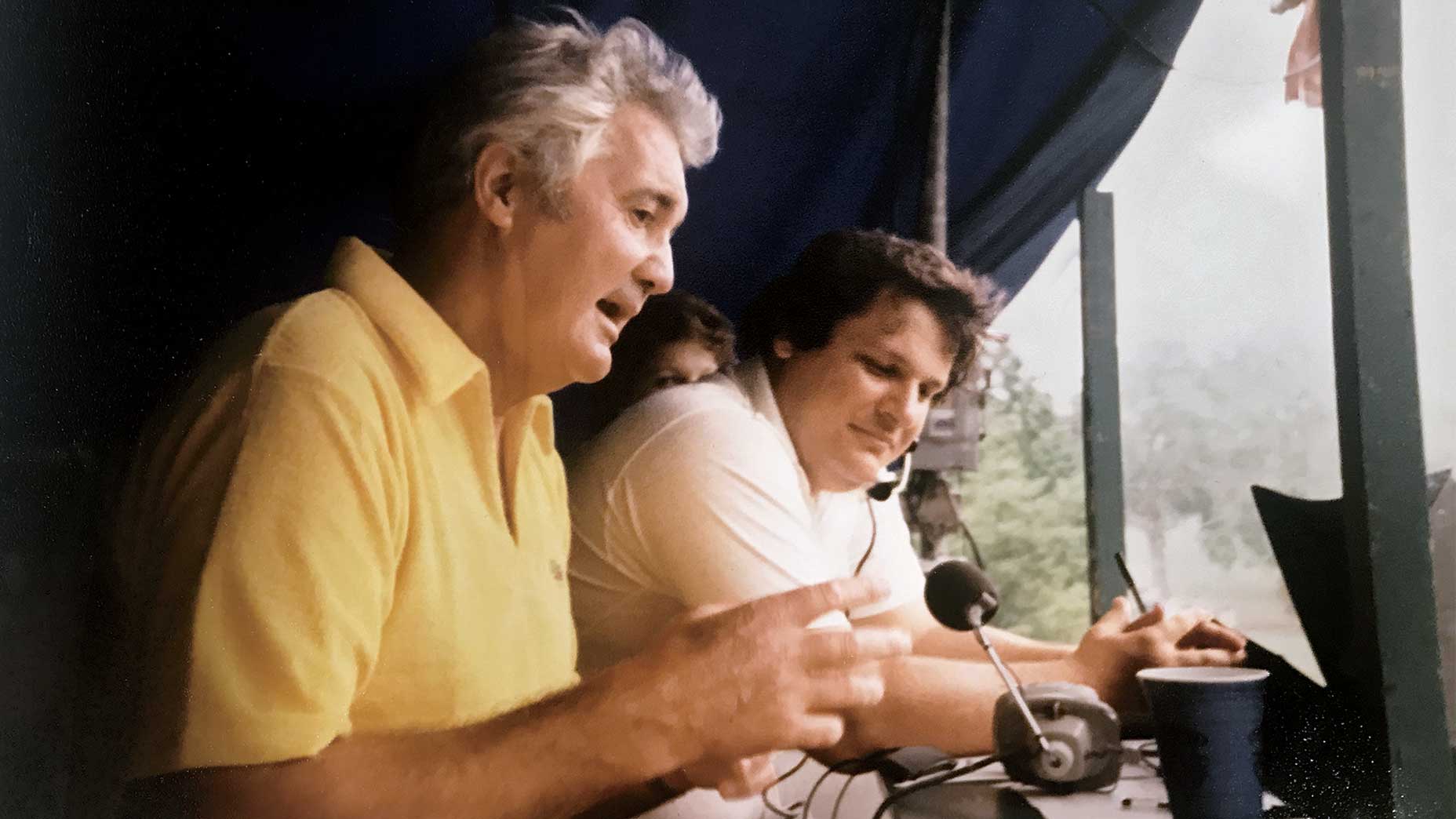
I found Pat in the tower. I introduced myself and asked him what I could do to help him. He said, “Don’t get excited, and don’t call me Mr. Summerall.”
I was working alongside CBS camera operators who had worked alongside Edward R. Murrow in Europe. I had found my calling.
Early on, Pat said, “What tournaments would you like to work?”
“I’ll do all of them,” I said.
“Don’t you want to think about it first?” he said.
“No sir,” I said.
That, by the way, is my advice to people who want to work in this business. Just say yes.
My starting salary was $60 a week. You learn, and you rise, by doing, by listening, by watching — and by getting the job done. Chuck would say to me, “Humble yourself: Get me half a cup of black.”
In golf and TV, your classroom is everywhere. In my early years there were many Sunday nights when, after a tournament, I found myself on the same flight back to Dallas-Fort Worth as Don January, Lee Trevino and Charles Coody. They would all be in their sports coats, of course, so I would be, too. They would talk about the shots they hit, what the other players were like under pressure, rules disputes. All I did was listen.
When I look back, or when I see our old broadcasts, I see how much things have changed. The graphics, the use of Shot Tracer, how HD television allows you to see the sweat on the golfer’s face. But when you’re doing the work, week after week and year after year, the changes are gradual. In my early years, we had a small concrete landing behind the 12th green at Augusta in the woods, and I would sit there next to Pat, who would be at a desk and behind a Plexiglass wall so the players couldn’t hear him. He’d whisper anyhow. I’d get information via walkie-talkie and write things down for Pat on big cards. We could see some of the other action on TV monitors that were powered by car batteries. We thought we were cutting edge.
It was intimate, and good golf on TV always is. That’s not easy to do, because the playing field is so big. I’ve done a lot of football work for CBS, too, including 14 Super Bowls, four as producer. Football, of course, is played in a well-defined, relatively small rectangle, and the games have timeouts. But the 22 players are in helmets and each man does his own thing. In golf you focus on one player doing one thing while keeping an eye on the big picture. There’s a lot to balance.
For years, one of Pat’s responsibilities at the Masters was to interview the winning player in Butler Cabin. In those few minutes, millions of viewers get to know a player. My job was to get Pat to Butler Cabin. In 1978, Gary Player was the winner. He came into the cabin and said to me, with his great South African accent, “Would you please hold my hat?” He was always polite and proper like that. When he left, he forgot his hat. I had that hat for years. There’s no saying how many people have tried it on.

That was my first Masters as a regular full-time CBS Sports employee. About three months earlier, I was working Super Bowl XII, in New Orleans. (Dallas 27, Denver 10, a good result for this Texan.) Before the game, we had a CBS touch football game. I intercepted a pass thrown by Sonny Jurgensen, the legendary NFL quarterback. The captain of our team was Robert Wussler, a longtime CBS executive.
“Who is that?” Mr. Wussler said.
“That’s the kid who works for Pat,” somebody said.
“Let’s put him on salary,” Mr. Wussler said.
I’m guessing he didn’t see me fall to the ground after making that catch. As Tiger likes to say, sometimes you have to get lucky.
At last year’s Masters, Tiger was maintaining while everybody else was collapsing. He played great golf, but of course he got lucky, too. That’s golf. That’s what we capture on TV, in real time, all the many steps that lead to victory. Live sports programming is reality TV at its best. Nobody tells you how it’s going to end or even when it’s going to end.
You constantly make adjustments. After Tiger holed his last putt, Jim and Nick didn’t say a word for two minutes and 30 seconds. The scene, and Tiger’s face, said it all. Frank Chirkinian, like a movie director, always stressed the importance of how you go out, how you close.
The next day, Tiger was on the front page of every newspaper in the country. Our CBS team drove to Hilton Head for our next event.
When Tiger won his first Masters, that was a piece of golf history and we tried to capture that. When Tiger won his fifth Masters, last year, that was a story about resilience and family bonds, and we tried to capture that. This year, when golf returned at Colonial, after a three-month absence because of Covid-19, we knew we had an opportunity to give viewers a break from all they were enduring, all that monotony and worry. Over this spring and summer, we had so many obstacles to tell the story of those tournaments. Due to the changes, this year CBS produced Colonial, Hilton Head, Hartford, Detroit, Columbus, Memphis, San Francisco for the PGA Championship, Greensboro. It was challenging, to say the least. But we felt we were doing something important. Golf on TV brings a lot of joy to a lot of people.
No golf tournament brings more joy to more people than the Masters. Usually, you think of it each April as the start of the major championship run. This year, it’s more like the end of it. That’s okay. I can’t wait. Just like millions of others, come Sunday afternoon I’ll be watching a happy golfer walk into Butler Cabin. Same as you, except I’ll be in a trailer in the CBS compound at Augusta National, tethered to a swivel chair, with headphones on my ears and a mic by my mouth and dozens of monitors in front of me. I won’t be yelling. I’ll be watching a story unfold, excited to see how it will all play out. Just like you.


